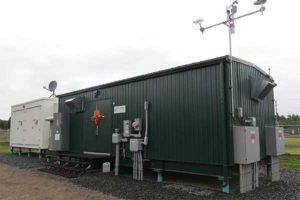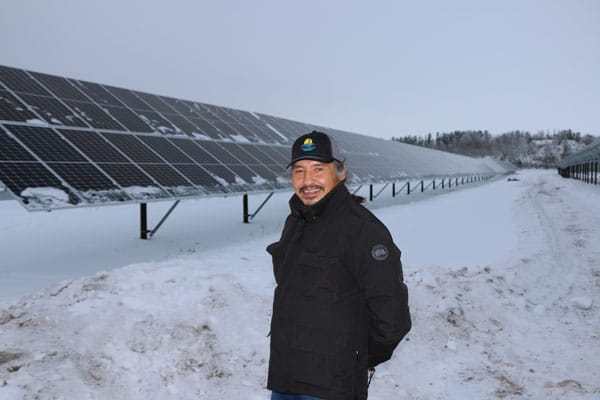- Canada has 170 remote indigenous communities spread over all provinces and territories.
- Most of these communities depend on diesel fuel to generate power and heat. But now, something is happening, a transition is underway as they shift towards solar and storage.
- This shift presents many opportunities, but so are the numerous roadblocks they have to overcome.
There are around 170 remote Indigenous communities in Canada, with a combined population of over 100,000 people.
While some of these communities are reachable by permanent road, most are only accessible by plane, boat, or winter road. Historically, these remote communities have depended on diesel fuel to generate power and heat, but a transition is underway as they shift towards renewable energy solutions.
Issues with Diesel generated power
Diesel fuel has negative social, economic, and environmental consequences. Relying on locally generated electricity from diesel-powered generators limits the potential for remote communities to grow due to high electricity costs. Diesel-generated power has adverse environmental effects as the greenhouse gases emitted during production contribute to pollution. There are also risks of potential spills and fires.

One of the large diesel generators that supply power to Iqaluit, Nunavut. (Dave Lovekin, Pembina Institute. 2019)
Burning diesel for heat and power can also cause health issues ranging from eye and nose irritation to respiratory illnesses.
The reliability issues with diesel-generated power are made worse by transportation difficulties. Many of these remote communities are only accessible by plane. With fuel deliveries being infrequent, an interruption in supply would be catastrophic, especially in winter when there are more likely to be weather-related disruptions to flights.
How solar and storage solutions are helping
Every remote community has unique energy needs, and there are currently many examples of how solar technology initiatives have been helping reduce their reliance on diesel. Also, energy storage applications here decrease dependency on diesel by making existing renewable energy projects more efficient and capable of serving a larger population. It also helps industrial buildings reduce peak power usage.
An example of a combined solar + storage application is a microgrid system in the remote First Nation community of Gull Bay, Ontario, also known as Kiashke Zaaging Anishinaabek (KZA). For years, Gull Bay relied on diesel as its only energy source until 2019, when Stantec installed this fully integrated solar energy storage system.

The EHouse, otherwise known as the microgrid control center, at Kiashke Zaaging Anishinaabek ― Gull Bay First Nation, is producing clean energy for the remote community. (Stantec)
The approach uses solar power, battery storage, and automated-control technology to provide much-needed electricity to the community. The project replaces approximately 130,000 litres of diesel fuel with clean energy per year. Stantec says this approach is a repeatable solution that works well with the cultural values of Indigenous communities, and it’s equally applicable to any remote town or work site.
The roadblocks impeding this transition and how to overcome them
When a provincial electricity system is run as a monopoly, Indigenous groups are denied the ability to operate their own utilities and profit from the community and environmental benefits of a shift to renewable energy.
For example, First Nations in BC are currently disputing the right of the British Columbia Utilities Commission (BCUC) to regulate their utilities. BC Hydro is suggesting Indigenous utilities be self-regulating while operating on current treaty settlement lands.
Although the BCUC is considering the proposal, they would prefer to continue having a regulatory responsibility over all utilities in the province to ensure reliable and reasonable prices. Similar disputes will continue to materialize across the country as long as provincial electricity systems run as a monopoly.
The current Cost of Service (CoS) utility model will need to change for remote communities to transition from diesel to clean energy successfully. The standard CoS utility model currently in place across Canada acts as a deterrent for provinces to purchase renewable energy from independent power producers. Utility companies have an incentive to own more assets and sell more energy to increase revenue within the current model. This, in turn, detours the purchase of renewable energy from independent producers, such as the remote communities interested in participating in the shift towards a cleaner Canada.

Owen Miles is a journeyman electrician-in-training from Fort Severn, and has been involved in the creation and installation of the solar panels for years. (Michael Wrinch/Hedgehog Technologies)
Large-scale solar projects, such as the recently completed 300-kilowatt solar farm in Fort Severn, ON, have hugely impacted rural Canadian communities. This project is an example of how valuable it would be for Canada to shift away from the current CoS utility model toward a more diverse and environmentally friendly energy mix.
The solar farm now powers the entire Fort Severn community, and it will displace 130,000 litres of diesel fuel on an annual basis. The project generates $250,000 – $350,000 CAD each year, depending on the amount of sunshine and revenue, currently addressing the shortage of homes in the Fort Severn Community.
Reforming the CoS business model can increase Indigenous participation in the renewable energy movement and make room for more success stories like the Fort Severn solar farm, which has displayed tremendous environmental, financial and community benefits.
The Government has committed an additional $300 million over the following five years to continue to help rural, remote, and Indigenous communities currently reliant on fossil fuels. The next step is for existing utility regulatory bodies to recognize Indigenous utilities as autonomous actors that can supply energy to their communities, which would help advance Indigenous energy sovereignty.
Policy reform would also be advantageous for diesel-dependent communities, such as a call to increase renewable energy integration through higher renewable energy limits. Also, policies requiring utility companies to perform grid impact studies could help determine the impact that a shift away from diesel would have on grid stability, safety, and environmental impact for these rural communities.
Rethinking the current CoS utility business model and additional policy reform will need to take place for Canada to meet its target of 2030 for all remote communities to be transitioned off diesel.














Comments